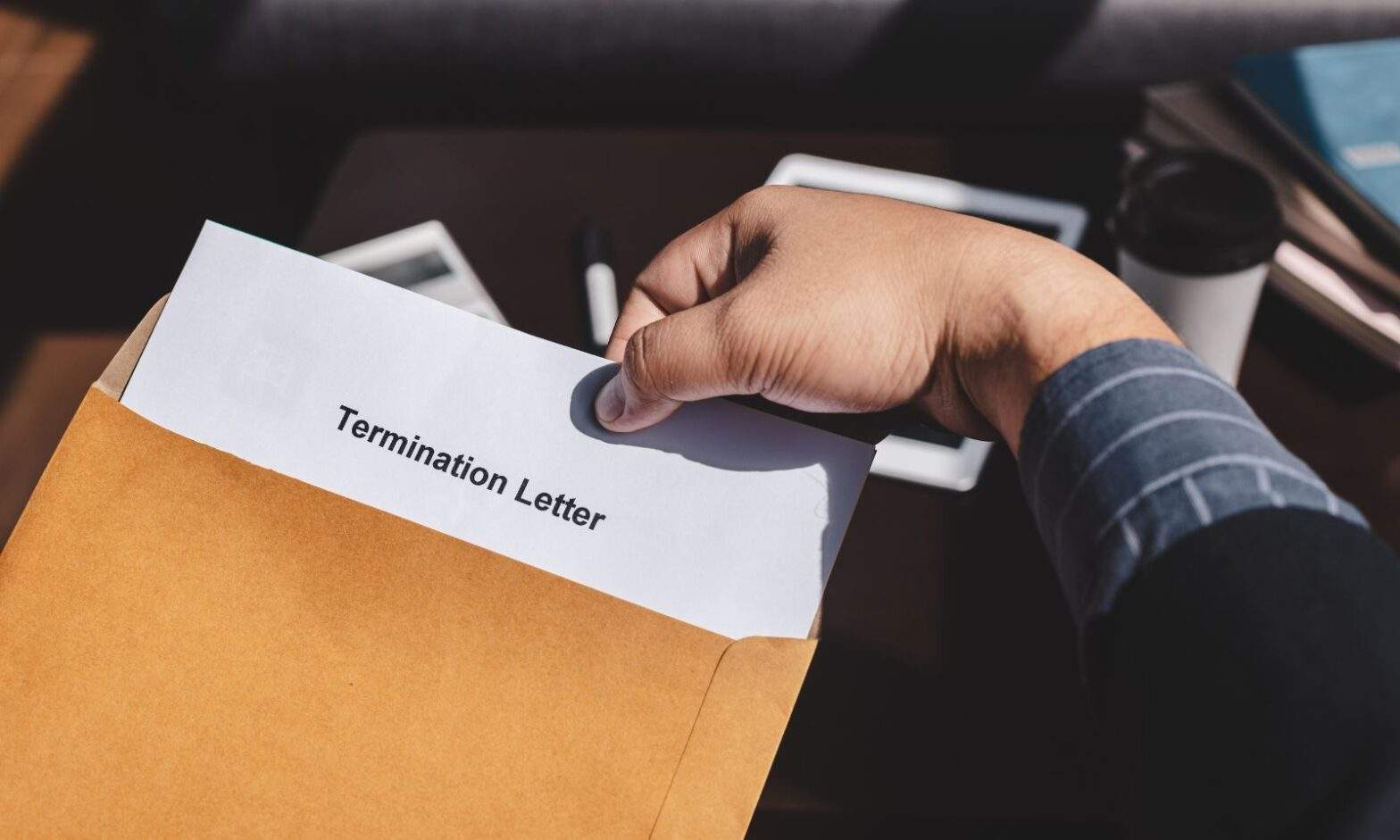When you are wrongfully terminated from your job, you aren’t just dealing with a loss of income – more than likely, you’re also dealing with the frustration and confusion of being treated unfairly and unlawfully.
In this guide, we’ll cover the basics of filing a wrongful termination claim, including how having seasoned legal professionals by your side can drastically improve your chances of achieving the best possible outcome.
Table of Contents
First Off, Can You Sue for Wrongful Termination?
When you think about how to file wrongful termination cases, you might be imagining a lengthy, difficult court battle. However, the reality of wrongful termination cases is quite different.
In the vast majority of cases, the dispute is resolved well before reaching a courtroom. Although legal action is a possibility, the focus should ideally be on securing a resolution through negotiation and mediation. With an experienced and skilled legal team, you can significantly simplify the process and often achieve a better outcome.
Defining “Wrongful Termination” in the Eyes of the Law
Wrongful termination refers to an employer’s action to dismiss an employee that violates federal or state laws, breaches employment agreements, or occurs under discriminatory or retaliatory circumstances.
Legally, wrongful terminations might involve:
- Dismissal due to personal characteristics or beliefs protected by law (such as discriminating based on race, religion, or disability status).
- Retaliation against an employee for whistleblowing or exercising their legal rights.
- Violations of labor laws or contractual terms stipulated in employment agreements.
How to File for Wrongful Termination
The process of filing for wrongful termination involves several essential steps, each one serving an important role in building a strong and effective case.
Gather Documentation
Compile all relevant employment records, including emails, performance reviews, and any communication related to your termination. This documentation will serve as the foundation of your claim, demonstrating your employment history and the circumstances of your dismissal.
Record All Details of Your Termination
Note every detail about the termination process, including dates, times, and the individuals involved. This step is crucial for establishing a timeline and context for your claim.
Consult with an Employment Attorney
Contact a lawyer who specializes in employment law in your state. An attorney can provide crucial insights into the viability of your claim and strategize the best course of action based on the specifics of your case.
File a Claim
With your lawyer’s assistance, prepare and file a wrongful termination claim with the relevant state or federal agency. Your attorney will know the appropriate legal venue based on the nature of your termination and jurisdiction.
Prepare for a Response
Be prepared to respond to any inquiries or requests for additional information from the agency handling your claim. Your lawyer will assist you in managing these interactions to maintain the integrity and strength of your case.
Move Forward Towards a Resolution
The potential outcomes of a wrongful termination case can vary based on the specific details of the case and other factors. Some possible paths to resolution include:
- Mediation and settlement negotiations: Often, wrongful termination claims are resolved through mediation or settlement negotiations before reaching a tribunal or court. During this phase, both parties, aided by their legal representatives, will discuss a potential agreement to settle the dispute without further legal proceedings.
- Agency investigation: If the case isn’t settled, the relevant labor agency may conduct a formal investigation. This is a crucial phase where the evidence you’ve provided is examined, and additional information may be requested. The outcome of this investigation can heavily influence whether the agency decides to pursue action against the employer.
- Hearing: Your case may proceed to a hearing depending on the agency’s findings. During a hearing, both parties present their evidence and arguments in a more formal setting, similar to a court trial, but typically less formal and quicker.
- Final decision: After the hearing, a decision will be made regarding your claim. If wrongful termination is found, the remedies may include compensation for lost wages, reinstatement to your job if desired, and sometimes penalties to the employer.
The Challenges of Proving Unlawful Termination Cases
When it comes to how to prove wrongful termination, establishing the grounds for your case can be a complicated process. Some of the most common challenges in these cases include:
- Gathering sufficient evidence to prove the termination was illegal.
- Demonstrating the direct link between the unlawful reason and the termination.
- Overcoming the employer’s potential defenses, such as claiming the termination was due to legitimate business reasons.
How an Employment Lawyer Can Elevate Your Wrongful Termination Case
Exactly how often are wrongful termination cases won? Ultimately, the success of your case can come down to your legal representation. An experienced employment lawyer can be instrumental in your wrongful termination case, providing invaluable advantages, including:
- Expertise in California employment law and wrongful termination cases.
- Strategic advice on how to gather evidence and present your case.
- Negotiation skills to secure a favorable settlement without the need for a trial.
- Representation, if the case does go to court, ensures your rights are defended professionally.
If you believe you’ve been wrongfully terminated, seeking professional legal advice should be your first step. Contact Prestige Legal Solutions at (310) 276-7994 for a free, no-obligation review to take the first steps towards protecting your rights now!
Image Credit: Chayantorn Tongmorn / Shutterstock

